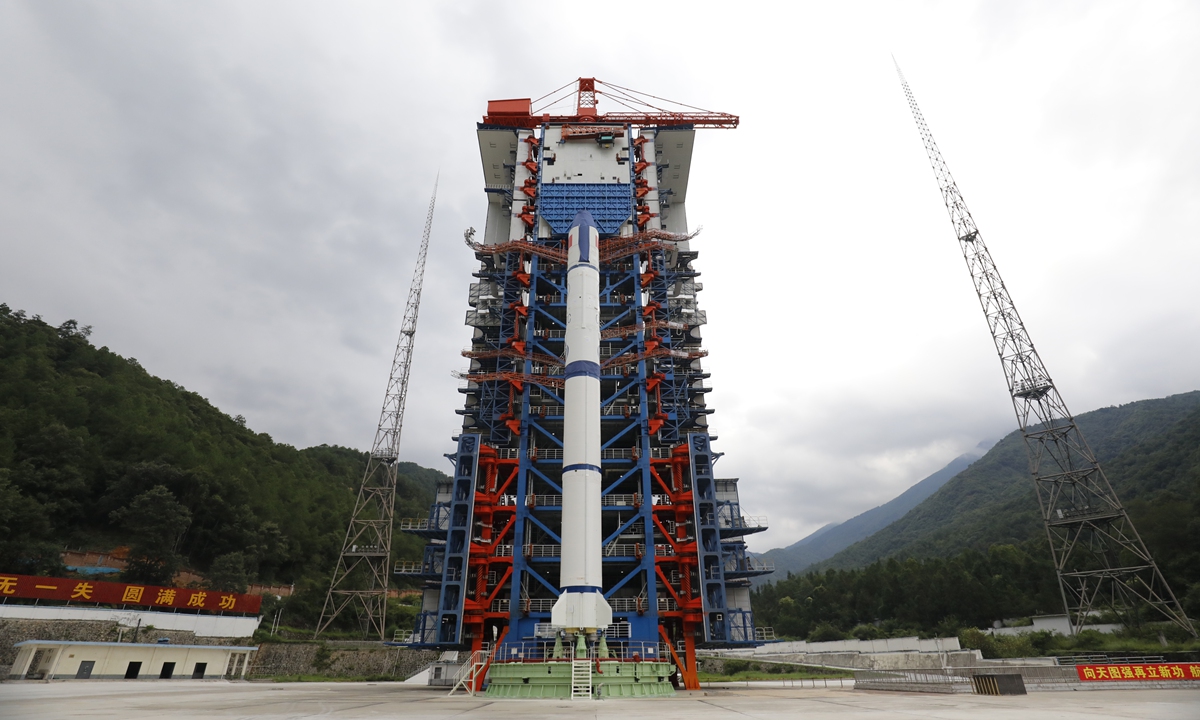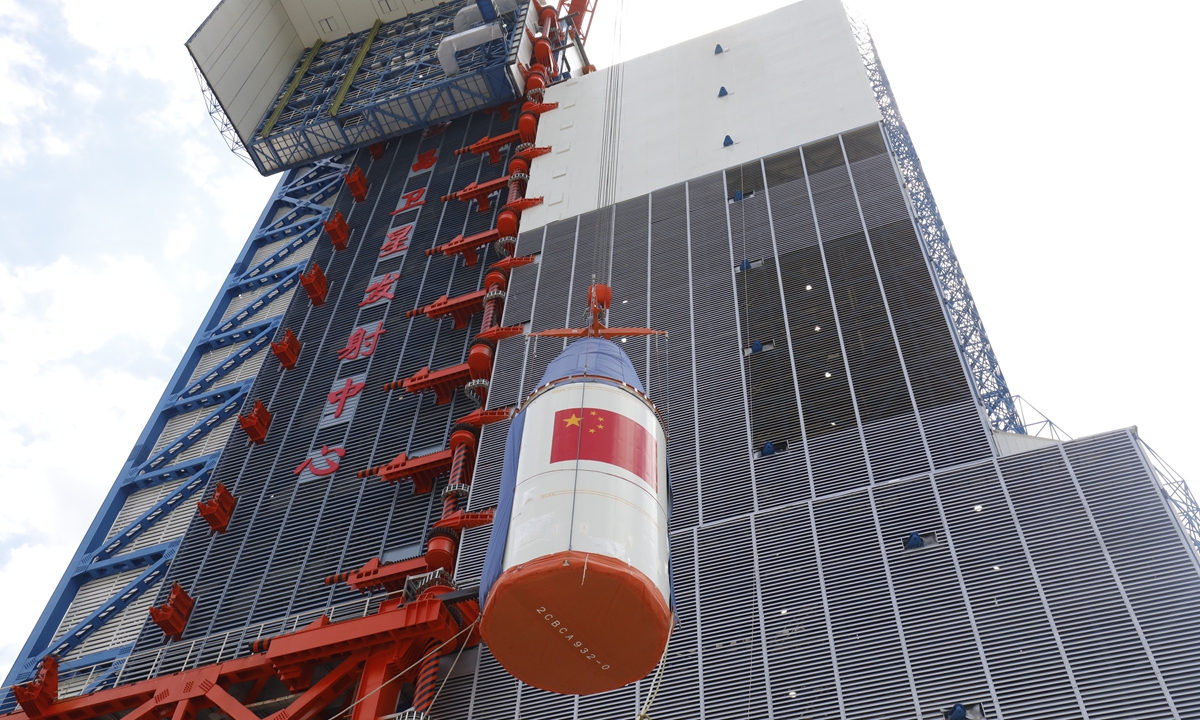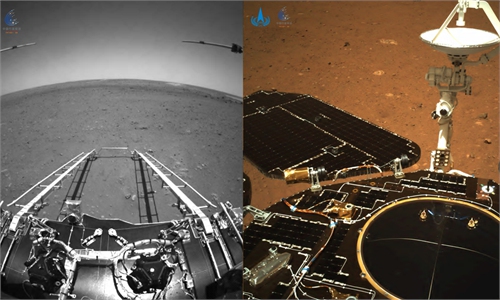SCI-TECH / AIR & SPACE
China recovers rocket nose cone with parachute for first time; technology to improve reusability

The Long March-2C carrier rocket on the launching pad at the Xichang Satellite Launch Center in Southwest China's Sichuan Province Photo: Zhang Senyu
China has recently achieved another milestone in the field of rocket debris safety treatment - its first-ever parachute landing of the payload fairing, the Global Times learned from the country's major rocket manufacturer, the China Academy of Launch Vehicle (CALT) on Thursday.
According to the academy, the Monday launch of a Long March-2C Y49 carrier rocket that successfully sent three Yaogan-30 Group 10 satellites included new parachute-based technology for a rocket nose cone controlled landing. The aim is to constrain the potential landing area by up to 80 percent in order to ensure the safety of the rocket remains' re-entry.
According to mission insiders, such technology comprised two subsystems - the electrical system inside the payload nose cone to control the parachute and a parachute system.
The process is done under real-time monitoring. When the fairing falls to a certain altitude, the parachute will be activated to conduct a first-stage deceleration. As the nose cone continues to descend, it will drop the parachute and open the parafoil for the second-stage deceleration, during which the rocket section would fly to a fixed landing site under control, they explained.
As the precision recovery of payload rocket fairings is highly challenging and has a high technology threshold, only US-based SpaceX has so far used this solution and managed to pull off the flight verification at sea, as a way to improve rocket reusability, according to developers with the 508th Research Institute, also known as the Beijing Institute of Space Mechanics and Electronics.
Since three of China's four space launch centers are deep inland and its space launches have become increasingly frequent, it's becoming more urgent to master the precision recovery of rocket debris to ease the pressure of pre-emptive evacuations in potential landing areas, the CALT said in a statement sent to the Global Times on Wednesday.
Rocket designers have been working on solutions to address the issue over the years, through paths including parachute technology and grid fin technology in different scenarios, the CALT said.
In June, the academy successfully tested a 300-square-meter high-tech parachute system during a flight of its Long March-3B carrier rocket, marking a first in the country's aerospace history.
China first tested grid fin control technology on a Long March-2C carrier rocket on July 26, 2019. The first stage of the rocket was controlled to fall in a predetermined area.

The Long March-2C carrier rocket on the launching pad at the Xichang Satellite Launch Center in Southwest China's Sichuan Province Photo: Zhang Senyu
Choosing the most reliable Gold Medal rocket types to test such new recovery systems shows that China's launch vehicle development strictly follows the laws of science, Wang Ya'nan, chief editor of Aerospace Knowledge magazine, told the Global Times on Thursday.
Wang said that apart from safety, reusability of launch vehicles for efficiency and cost reasons must be considered by Chinese rocket designers in their exploration of rocket parts recovery technology. Step by step they are testing such technology from boosters and rocket stages and now to the nose cone.
The complete success of the flight test of the parachute system showed that China has made a major breakthrough in the high-altitude deceleration and landing technology of rocket fairing. It is also conducive for the development of reusable spacecraft and accurate delivery of emergency supplies, the 508th Research Institute said on its WeChat public account on Thursday.
The CALT said it plans to continue testing parachute systems in Long March-2C rocket flight missions next year.



